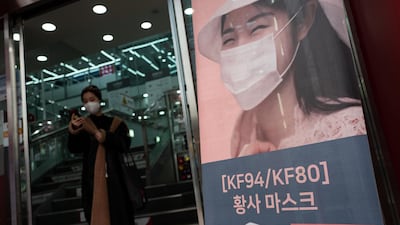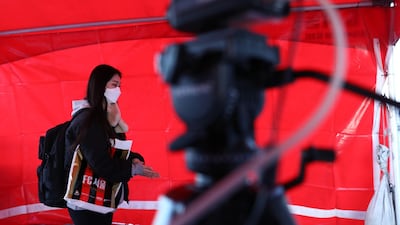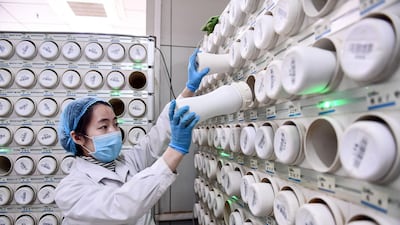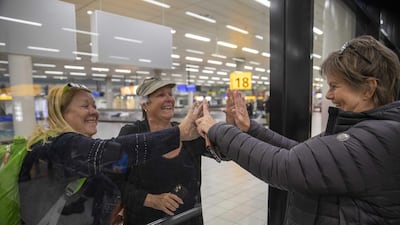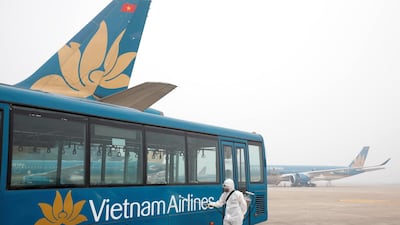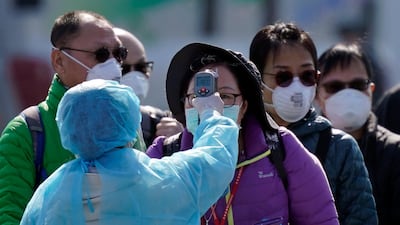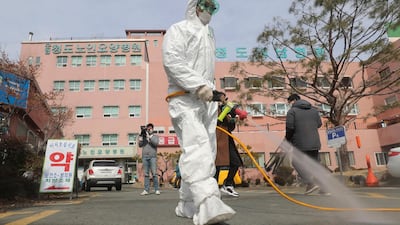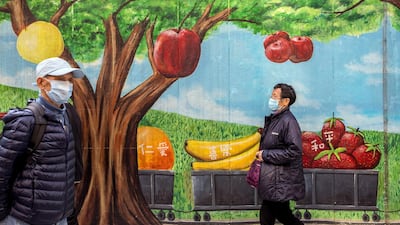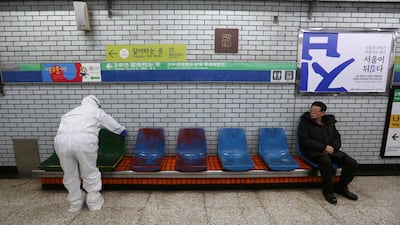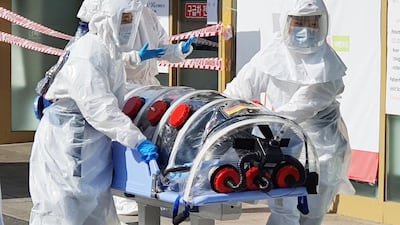South Korea reported 52 new cases of coronavirus on Friday in a two-day spike that has seen a sharp rise in infections. The country has now confirmed a total of 156 cases, making it the largest outbreak outside mainland China and the Diamond Princess cruise ship docked off Japan.
Authorities have imposed new measures to contain the spread of the virus, with “special cares zones” set up around the southern cities of Daegu and Cheongdo.
In the capital, Seoul, officials banned major downtown rallies and shut down a big park to avoid mass public gatherings where the virus could spread. Workers in protective gear also sprayed disinfectant in the city's subway.
The spike, especially in and around Daegu city, has raised fears the outbreak is getting out of control in the country. The surging outbreak, which has been largely linked to a church in Daegu, threatens to overwhelm the region’s health system.

The first two cases were confirmed in South Korea’s 600,000-member military, after a navy sailor and an army officer who had reportedly visited Daegu recently, contracted the virus.
Prime Minister Chung Se-kyun said in a televised statement that the central government will concentrate its support on the southeastern region to ease a shortage in sickbeds, medical personnel and equipment.
“A month into the outbreak, we have entered an emergency phase,” Mr Chung said. “Our efforts until now had been focused on blocking the illness from entering the country. But we will now shift the focus on preventing the illness from spreading further in local communities.”
The surge of infections in Daegu and several cases in Seoul with unclear infection routes forced government officials to acknowledge on Thursday for the first time that the virus was circulating in the local population.
Initial cases of the illness in South Korea had been connected to China, where the virus has infected 75,000 people and caused more than 2,200 deaths. South Korea on Thursday reported its first virus-related death, one of 11 outside mainland China.
Daegu Mayor Kwon Young-jin on Thursday urged the city’s 2.5 million people to stay at home and wear masks, even indoors if possible.
Most of the new cases in the southeastern region are linked to a church in Daegu.
The Shincheonji church, which claims about 200,000 followers in South Korea and has been accused of being a cult, said it has closed all of its 74 sanctuaries around the nation and told followers to watch its worship services on YouTube instead. It said in a statement that health officials were disinfecting its church in Daegu and were tracing the contacts of a 61-year-old woman who had attended services in recent weeks and is believed to be a potential source of the spread of the virus. The Daegu branch has about 8,000 followers.
President Moon Jae-in ordered swifter action to trace down to those who recently visited the Daegu church and a hospital in another southeastern city of Cheongdo, where many virus cases were also reported in the past three days.

The World Health Organization said the jump in cases in South Korea doesn’t signal an increased risk of a global pandemic. WHO Director-General Tedros Adhanom Ghebreyesus said the new cases were mostly linked to known, existing clusters of infections and that South Korean authorities were following them very closely.
“The number of cases are really manageable, and I hope South Korea will do everything to contain this outbreak at this early stage," Mr Ghebreyesus said.
He noted that more than half of the COVID-19 cases outside China are from the Diamond Prince cruise ship docked in Japan.
